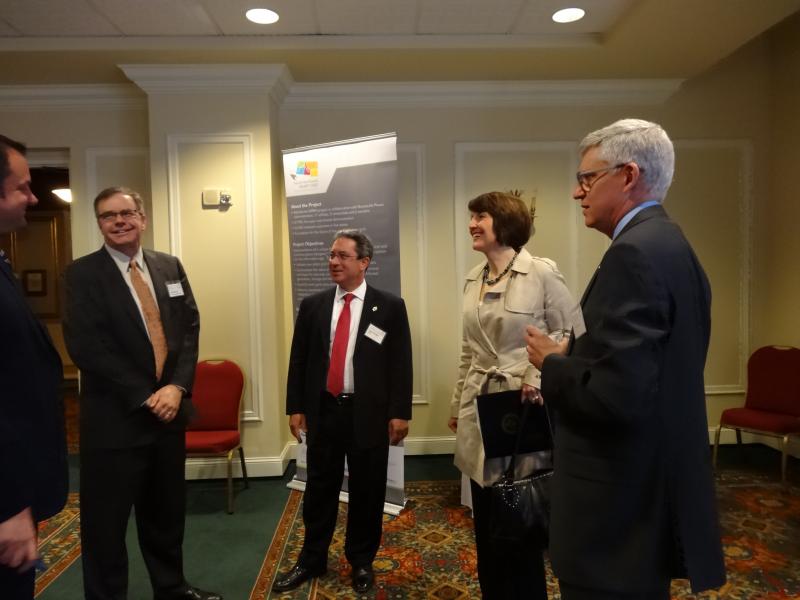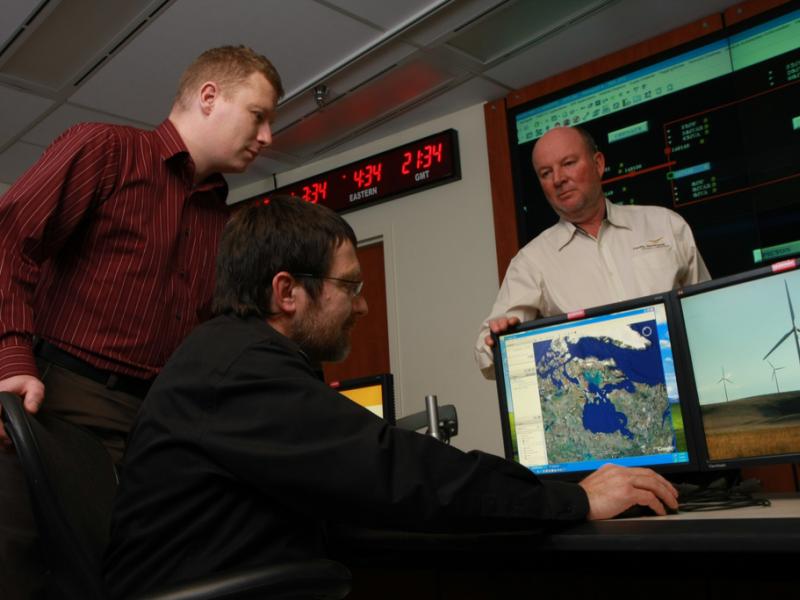Grid Research Just One Highlight for New PNNL Director

Steve Ashby, Pacific Northwest National Laboratory Director
(Photo by Pacific Northwest National Laboratory)
I am both honored and humbled to have been selected to succeed Mike Kluse as director of the Department of Energy's Pacific Northwest National Laboratory (PNNL.) I look forward to building on the foundation of success that Mike built during his eight years as director.
As one of 10 national labs operated for DOE's Office of Science, PNNL plays a central role in addressing the challenging problems facing our nation and the world. I have been associated with DOE and its labs for more than 30 years, starting as a graduate student intern and most recently spending seven years as PNNL's deputy director for Science and Technology.
I have learned that national labs are great places to do science and engineering that matters—and that PNNL is truly special among the labs.
My confidence in PNNL's future is rooted in our 4,300 scientists, engineers and support professionals. These are incredibly talented people who do amazing things every day. With recognized leadership in understanding climate science, inventing the future power grid, speeding environmental remediation and preventing nuclear proliferation, we are poised to deliver even greater scientific impact in the years ahead.
On April 1—my first day as lab director—I represented PNNL in a regional forum focused on one of these leadership areas: grid modernization. I joined members of our Congressional delegation, industry leaders and other stakeholders in Spokane to celebrate the accomplishments of the Pacific Northwest Smart Grid Demonstration Project.

Led by Battelle in collaboration with the Bonneville Power Administration, this project is the largest field test of smart grid systems to date, involving 11 electric utilities and 60,000 metered customers across five states. The $178 million cost of the five-year project was shared equally by DOE and industry participants.
In all, more than 65 different technologies were deployed in a real-world demonstration to test how new devices, software and advanced analytical tools could help consumers and producers of energy save money. The $80 million of project equipment will remain in place so that the region can expand its smart energy management efforts for the benefit of regional rate payers.
Benton PUD was part of the project and tested both energy storage and a web platform to work with data from smart meters to allow two-way communications between the utility and the consumer.
Although final results won't be available until June, the symposium provided a forum for sharing lessons learned and discussing how the region might build on this unprecedented investment.
For more than 20 years, PNNL has worked with regional and national partners to develop next-generation technologies and tools to enable a more efficient, flexible, reliable, and secure grid. In my remarks at the symposium, I reaffirmed PNNL's commitment to focus our unique capabilities, resources and leadership to help deliver a modern, 21st-century grid.

In one tangible example of our continuing commitment, we are building a new energy research facility on our Richland campus that will be fully operational by late summer. The Systems Engineering Laboratory, built by DGR Grant Construction, Inc. of Richland, is an important step forward for PNNL's grid modernization and energy efficiency efforts.
The energy-efficient, 24,000-square-foot facility will bring together state-of the art capabilities and equipment to address national challenges related to the grid—from increasing its reliability and resilience to integrating renewable energy, reducing energy use in buildings and much more. It will house PNNL's Electricity Infrastructure Operations Center with grid visualization tools and control rooms to develop and test next-generation systems for energy management.
PNNL's Building Operations Control Center, where researchers and facility staff use PNNL-developed energy efficiency software to monitor the energy use and system performance of many of PNNL's buildings, also will relocate to the new facility.
On the national level, PNNL is providing leadership to the DOE Grid Modernization Laboratory Consortium. DOE selected PNNL's own Carl Imhoff as the Laboratory Integrator Team Chair for the consortium late last year. He is helping coordinate and leverage the efforts and capabilities of national labs working to transform the U.S. power grid to meet the consumer, economic, environmental and security priorities of the 21st century.
The way that PNNL's research and leadership are shaping the future electric grid is just one example of how PNNL is addressing complex national and global challenges. Each day we make discoveries that help us to understand the world around us and each day we develop innovative solutions to pressing problems.
I believe that PNNL is poised to make even greater contributions in the future and I look forward to working with our staff, community leaders and others in this endeavor. Together, we will help PNNL become even more widely recognized as a world-class scientific research institution.
Steven Ashby, director of Pacific Northwest National Laboratory, writes this column monthly. To read previous Director's Columns, visit pnnl.gov/news and filter by Director's Columns in our Latest Stories.
Published: April 13, 2015